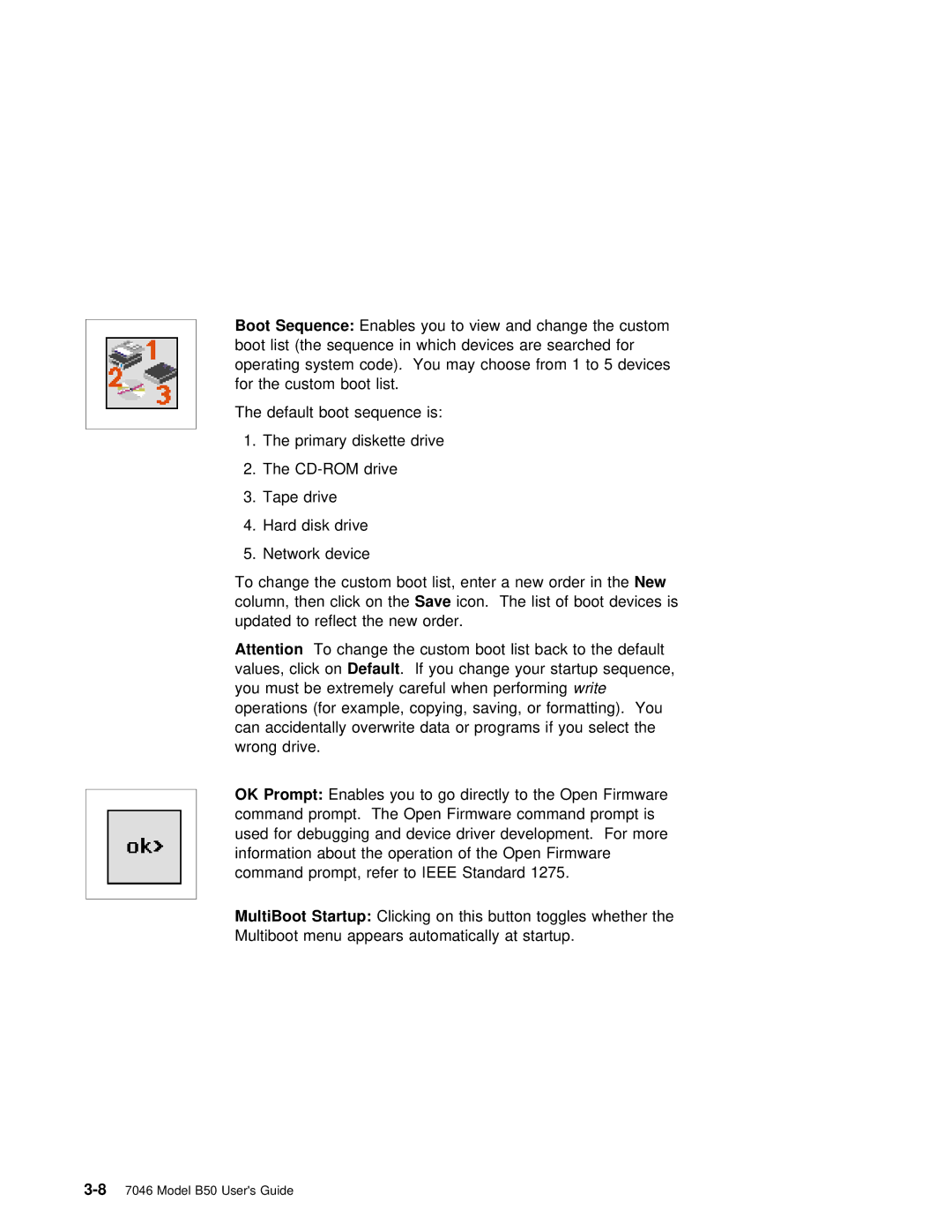
Boot | Sequence: | Enables | you | to view and change the | custom |
boot | list (the sequence | in which devices are searched for | |||
operating | system code). You may choose from 1 to | 5 devices | |||
for | the | custom boot | list. |
|
|
The default boot sequence is:
1.The primary diskette drive
2.The
3.Tape drive
4.Hard disk drive
5.Network device
To change the custom boot list, | enter | a Newnew | order | in | the | |||||||
column, | then | click | onSavethe icon. The | list | of boot | devices | is | |||||
updated to reflect the new order. |
|
|
|
|
|
| ||||||
Attention | To | change | the custom boot | list | back | to | the | default | ||||
values, clickDefaulton | . If you change your startup | sequence, | ||||||||||
you must be extremely careful whenwritperforming |
|
|
| |||||||||
operations | (for example, | copying, | saving, | or | formatting). You | |||||||
can accidentally | overwrite | data | or | programs | if | you | select the | |||||
wrong | drive. |
|
|
|
|
|
|
|
|
|
| |
OK Prompt: Enables you to go directly to the Open Firmware command prompt. The Open Firmware command prompt is
used for debugging and device driver development. For more information about the operation of the Open Firmware command prompt, refer to IEEE Standard 1275.
MultiBoot Startup: Clicking on this button toggles whether the Multiboot menu appears automatically at startup.
